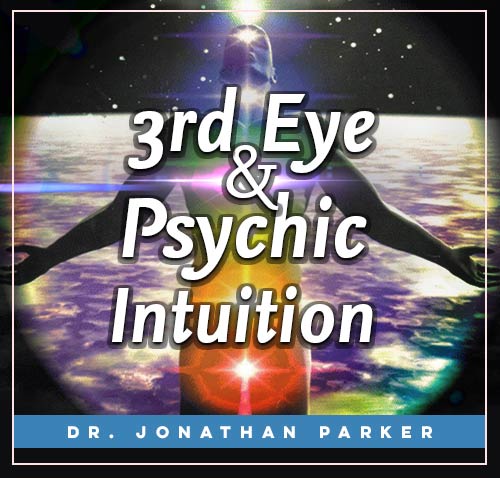Sensory Storytelling: Navigating Past, Present, Future

TRANSLATE BUTTON AT THE END OF THE ARTICLE
Overview
Sensory storytelling is a powerful and immersive technique that engages multiple senses to enhance the storytelling experience.
It goes beyond traditional storytelling by incorporating sensory elements such as sound, touch, smell, and even taste, to create a fully immersive and emotional journey for the audience.
This article will delve into the historical roots of sensory storytelling, the evolution of its techniques, current applications, the science behind its impact, and the future of this innovative approach in storytelling.
Understanding the Power of Sensory Storytelling
Sensory storytelling taps into the inherent human ability to process information through multiple senses simultaneously.
By engaging more than just one sense, it creates a deeper and more memorable experience for the audience.
Through sensory storytelling, storytellers are able to transport their listeners to different worlds, allowing them to fully immerse themselves in the narrative.
This heightened engagement can evoke strong emotions and leave a lasting impact on the audience.
Exploring the Historical Roots of Sensory Storytelling
The roots of sensory storytelling can be traced back to ancient civilizations that relied heavily on oral traditions and performed storytelling.
Griots in West Africa, for example, used music, dance, and rhythmic patterns to convey their stories.
Indigenous cultures around the world have also employed sensory elements such as music, dance, and elaborate costumes to enhance their storytelling traditions.
These historical practices demonstrate the long-standing recognition of the power of sensory stimulation in storytelling.
The Evolution of Sensory Storytelling Techniques
With the advent of written language and the printing press, storytelling shifted from a primarily oral tradition to a more text-based medium.
However, in recent years, there has been a resurgence of interest in sensory storytelling, fueled by advancements in technology and a desire for more immersive experiences.
Today, sensory storytelling techniques encompass a wide range of mediums, including interactive performances, virtual reality, augmented reality, and multisensory installations.
Current Applications of Sensory Storytelling
Sensory storytelling has found applications in various fields, including education, entertainment, marketing, and therapy.
In education, it has been used to enhance learning experiences by engaging students’ senses and facilitating a deeper understanding of complex topics.
In the entertainment industry, sensory storytelling has been used to create immersive experiences in theme parks, museums, and theater productions.
Additionally, sensory storytelling techniques have been utilized in marketing campaigns to create memorable brand experiences and connect with consumers on a deeper level.
How Sensory Storytelling Enhances Emotional Engagement
Emotions play a crucial role in storytelling, and sensory storytelling provides a unique opportunity to enhance emotional engagement.
By appealing to multiple senses, sensory storytelling can evoke a wide range of emotions in the audience.
For example, the smell of freshly baked bread in a story about a bakery can evoke feelings of comfort and nostalgia.
The sound of rain and thunder in a suspenseful story can create feelings of tension and fear.
By creating a multisensory experience, sensory storytelling allows the audience to connect with the narrative on a deeper emotional level.
The Science Behind Sensory Storytelling’s Impact
Scientific research has shown that sensory stimulation can significantly enhance memory retention and emotional engagement.
When multiple senses are engaged simultaneously, the brain forms stronger neural connections, leading to better memory encoding and retrieval.
Furthermore, sensory stimuli have been found to activate the limbic system, the part of the brain responsible for processing emotions.
This activation enhances the emotional impact of the story, making it more memorable and engaging for the audience.
Pushing Boundaries: Innovations in Sensory Storytelling
Innovators in the field of sensory storytelling are constantly pushing the boundaries of what is possible.
They are exploring new ways to incorporate cutting-edge technologies and unconventional sensory elements into their narratives.
For example, some storytellers are experimenting with haptic feedback devices that allow the audience to physically feel the story’s vibrations or textures.
Others are integrating taste and smell elements into their storytelling experiences, creating a truly immersive and multisensory journey.
The Role of Technology in Advancing Sensory Storytelling
Technology has played a crucial role in advancing sensory storytelling techniques.
Virtual reality (VR) and augmented reality (AR) have opened up new possibilities for creating immersive narratives.
VR enables users to step into a virtual world and experience the story firsthand, while AR overlays digital elements onto the real world, enhancing the storytelling experience.
Additionally, developments in sound engineering and haptic technology have further enhanced the sensory aspects of storytelling, allowing for a more realistic and immersive experience.
Challenges and Limitations in Sensory Storytelling
While sensory storytelling offers exciting possibilities, it also comes with its own set of challenges and limitations.
One of the main challenges is the need for significant resources, both in terms of time and funding, to create high-quality sensory experiences.
Additionally, ensuring accessibility and inclusivity for individuals with sensory disabilities can be a challenge.
There is also the risk of sensory overload, where too many sensory elements can overwhelm the audience and distract from the narrative.
Balancing the use of sensory elements to enhance the story without overshadowing it requires careful consideration and expertise.
Anticipating the Future of Sensory Storytelling
As technology continues to advance and our understanding of sensory perception evolves, the future of sensory storytelling looks promising.
With the increasing accessibility of VR and AR technologies, sensory storytelling experiences may become more widespread and accessible to a larger audience.
Furthermore, advancements in neuroscientific research and our understanding of the human brain’s response to sensory stimuli will inform the development of more effective and impactful sensory storytelling techniques.
Embracing the Sensory Revolution: Implications for Storytellers
The rise of sensory storytelling presents storytellers with new opportunities and challenges.
As technology continues to play a significant role in shaping the field, storytellers must embrace these tools and techniques to remain relevant in a fast-paced digital world.
By leveraging sensory storytelling, storytellers can create more immersive, engaging, and memorable experiences for their audiences.
However, it is essential to strike a balance between sensory elements and the core narrative to ensure that the story remains at the forefront and the sensory elements enhance rather than overshadow the overall experience.
Conclusion
Sensory storytelling is an enchanting and transformative approach to storytelling that harnesses the power of multiple senses to engage and immerse the audience.
From its historical roots in ancient civilizations to its current applications and future possibilities, sensory storytelling continues to evolve and captivate audiences across various fields.
By understanding the science behind its impact and embracing technological advancements, storytellers can push the boundaries of storytelling and create unforgettable experiences.
As we navigate the past, present, and future of sensory storytelling, it is important to remember that at its core, this approach is about connecting with our audience on a deeper emotional level and taking them on a truly memorable journey.

The Enlightenment Journey is a remarkable collection of writings authored by a distinguished group of experts in the fields of spirituality, new age, and esoteric knowledge.
This anthology features a diverse assembly of well-experienced authors who bring their profound insights and credible perspectives to the forefront.
Each contributor possesses a wealth of knowledge and wisdom, making them authorities in their respective domains.
Together, they offer readers a transformative journey into the realms of spiritual growth, self-discovery, and esoteric enlightenment.
The Enlightenment Journey is a testament to the collective expertise of these luminaries, providing readers with a rich tapestry of ideas and information to illuminate their spiritual path.
Our Diverse Expertise 🌟
While our primary focus is on spirituality and esotericism, we are equally passionate about exploring a wide range of other topics and niches 🌍📚. Our experienced team is dedicated to delivering high-quality, informative content across various subjects ✨.
To ensure we provide the most accurate and valuable insights, we collaborate with trusted experts in their respective domains 🧑🏫👩🏫. This allows us to offer well-rounded perspectives and knowledge to our readers.
Our blog originally focused on spirituality and metaphysics, but we’ve since expanded to cover a wide range of niches. Don’t worry—we continue to publish a lot of articles on spirituality! Frequently visit our blog to explore our diverse content and stay tuned for more insightful reads.






















